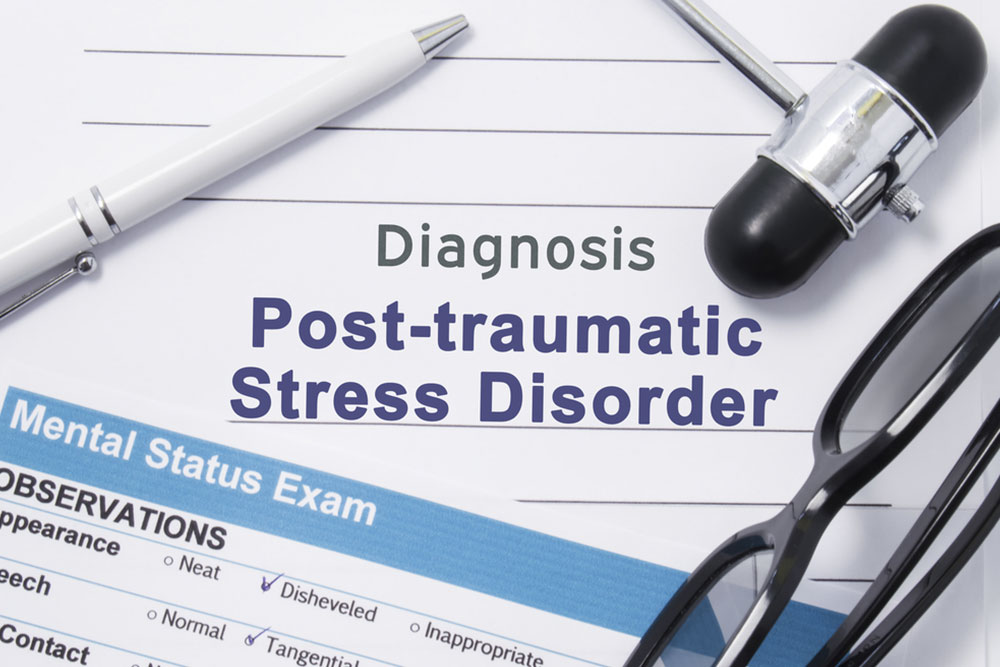Important Things to Know About PTSD Tests
Post-Traumatic Stress Disorder (PTSD) is a mental health condition that affects individuals who experience a difficult or disturbing event. It could be a car accident or assault. People affected might feel shocked or disoriented after such episodes, resulting in negative or anxious emotions like sadness, fear, or anger. Certain reports indicate that nearly 13 million people have been diagnosed with PTSD. Many are unaware of its symptoms and the importance of PTSD tests in early diagnosis and treatment of the condition.

What is PTSD?
Post-Traumatic Stress Disorder is a chronic stress disorder that might get permanent if not treated effectively in the early stage. The causes or effects of the traumatic event differ from one affected person to another. For instance, some people experience a single episode of the traumatic event, while others have multiple traumas over a period of time.
The chance of developing the mental disorder depends on the type and severity of the traumatic episode. The best way to treat the condition is by opting for a PTSD assessment test. The results can help one identify the root cause and receive appropriate treatment. One can opt for a PTSD self-test online or work under a licensed expert.
PTSD assessment test
An affected person can use PTSD tests online or offline methods. However, one needs to keep in mind that only a qualified and experienced mental health professional can make an accurate diagnosis of the condition.
- The Davidson Trauma Scale (DTS)
DTS is a self-assessment tool for PTSD tests that utilizes a four-item scale known as SPAN, indicating – Startle, physiological arousal, anger, and emotional numbness. It has 17 items and analyzes the rate of the severity of each symptom in the person across the given categories. - Short PTSD Rating Interview (SPRINT)
The SPRINT test is primarily used to assess symptoms of PTSD in its early stage. It detects the presence of eight proven symptoms of the condition, including avoidance, intrusion, numbing, arousal, stress vulnerability, somatic malaise, role, and social impairment. This test is considered the preliminary approach that instructs the affected person to rank the symptoms on a five-point scale.
Difference between regular and complex PTSD
Despite the circumstances, trauma has a profound impact on one’s mental health that will induce the development of PTSD. Typically there are two types of PTSD – Regular PTSD and complex PTSD. Though both types share similar symptoms like nightmares, flashbacks, and avoidance of triggers, there are a few key differences between them.
Complex PTSD is a type of mental disorder that occurs in people who have repeated or prolonged experiences of traumatic events. On the other hand, regular PTSD occurs in a single catastrophic experience. The complex type is often the result of exposure to ongoing circumstances like child abuse or domestic violence. The affected people often struggle with impulsivity, mood swings, and self-harm.
Tests for complex PTSD
Complex PTSD is a relatively new mental health condition. However, no biological or physical complex PTSD test can determine or confirm the presence. Instead, the healthcare professional asks certain questions based on the criteria from the DSM-5 manual (Diagnostic and Statistical Manual of Mental Disorders). It is diagnosed based on the four categories of symptoms,
- Intrusion/ Re-experiencing
Individuals might experience intrusive thoughts like involuntary memories, recurrence of events, distressing dreams, and vivid flashbacks, where they tend to relive the traumatic event or see it before their eyes. - Avoidance
Certain traumatic reminders make the affected person averse to specific places, activities, objects, people, and situations that trigger distressing memories or feelings. - Changes in cognitive functions and mood
This symptom encompasses the inability to remember critical aspects of the traumatic event and feelings, which might result in distorted beliefs about oneself or others. - Alterations in reactivity
Individuals get irritated and have sudden anger outbursts, proactively behaving in a self-destructive way.
In case of any concerns or queries about PTSD or its symptoms experienced, one can consult a healthcare professional at an early stage to prevent the progression of the condition.
Professional PTSD diagnosis
There are various ways to be tested for PTSD. In the initial stage, one can visit a primary care doctor. Then if needed, one will be referred to a licensed psychiatrist who can provide a professional diagnosis for the condition. The screening tools used in professional PTSD tests are:
Clinician-Administered PTSD scale (CAPS-5)
CAPS for DSM-5 is a standard test for PTSD diagnosis. This test includes 30 questionnaires that a psychiatrist uses to understand the patient’s condition better. The primary goal of the tool is to establish whether the individual can be diagnosed with PTSD and to know the duration. For instance, it aids in detecting,
- The duration of the onset of the symptoms
- The impact of symptoms on the daily life, work, and relationship of an individual
- The severity of the condition
Treatment-Outcome Post Traumatic Stress Disorder Scale (TOP-8)
TOP-8 is another interview-based PTSD test that uses the DSM-5 manual to evaluate the disorder’s symptoms. This scale involves eight questions designed based on the core symptoms groups of PTSD, such as avoidance, intrusion, and numbing.
PTSD Symptom Scale Interview
PSS-I is an assessment tool with 17 items related to PTSD that aids in finding the single traumatic event that induces the symptoms. The symptom will be asserted concerning the criteria from DSM-5. The PSS – I -5 has 24 questions, where 20 are about symptoms, and the remaining four focus on the condition’s interference, distress, onset, and duration.
PTSD can develop in any individual when they go through traumatic events. Simply put, it is an extensive experience of the fight or flight response, which can play out for several months. When the symptoms in the initial stage are left unnoticed, it might result in harmful responses. Therefore, diagnosing the condition in its early stage is essential to receive timely care and comprehensive help from professionals at the right time.















